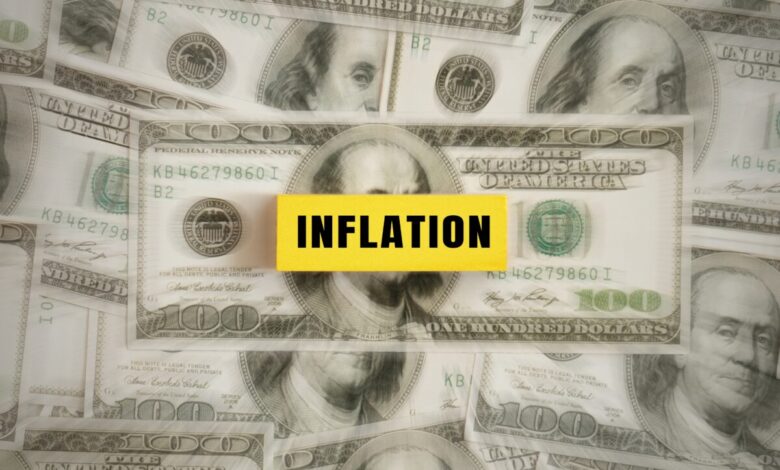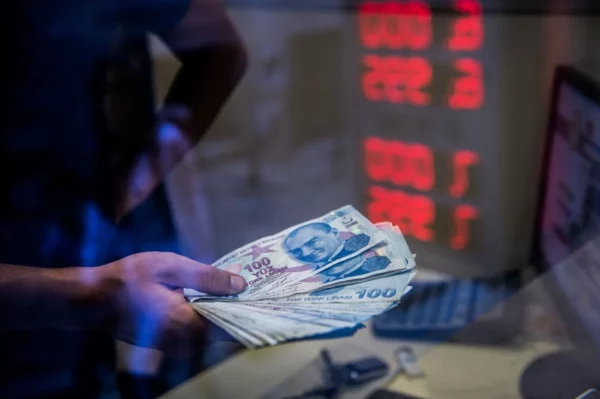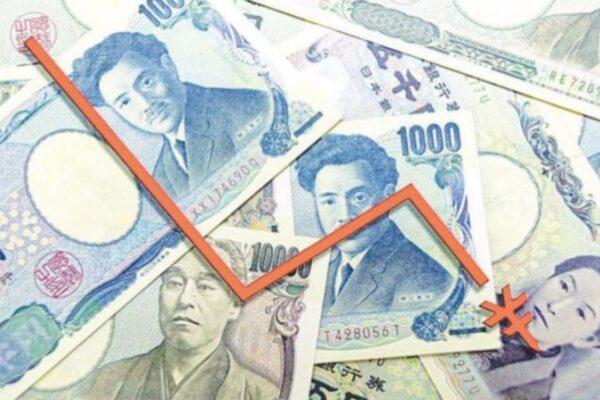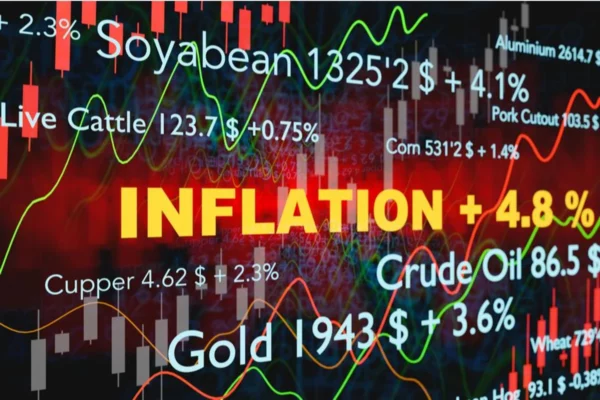Why is Inflation going to hit the West more than the East?

Why is inflation going to hit the west more than the east?
In several developed nations over the past year, inflation has reached multi-decade highs as a result of supply shortages, prescription drug limits, and a rising economic recovery. However, pricing pressure is far less intense in Asia. Why?
China’s low price level acts as a stabiliser, according to Chinese experts speaking at a symposium hosted by the National Development and Reform Commission (NDRC), the country’s main economic planner. High worldwide inflation has been stoked by the US and other Western nations.
Global inflation has clearly been increasing since 2021, putting an end to the period of low inflation that lasted for more than a decade. Particularly since this year, global inflation has risen quickly, with the US and Europe establishing long streaks of new highs or all-time highs.
Both the producer pricing index (PPI) and the consumer price index (CPI) in the US reached new highs in March, rising 8.5 percent and 11.2 percent, respectively, year over year. The CPI rose by 7.5 percent year over year in the eurozone, while the PPI increased by 31.4 percent, both of which are new records.
According to official data, China’s production inflation was 8.3 percent last month compared to the previous year, while consumer inflation was 1.5 percent.
According to the readout from the symposium on global inflation trends, experts present believed that the US and other Western economies, which have misgoverned internally while sowing discord and bullying externally, are to blame for this round of high inflation globally. These economies have done significant harm to the global economy.
One reason is that since the COVID-19 epidemic, the US and other major developed economies have printed too much money and adopted an extremely loose monetary policy, which has increased global commodities prices due to excess liquidity.
Another reason is that the US and other Western nations failed to stop and contain the pandemic, and as a result, their industrial and supply chains have been chaotic and are still recovering. This has had a significant impact on global production and supply chains and resulted in shortages of certain commodities and price increases, according to experts.
The conflict between Russia and Ukraine and the numerous rounds of sanctions that the US and some of its allies imposed on Russia have also had a negative impact on the global economy.
They stated that this has worsened supply-demand conflicts in global commodities like food, energy, and mining materials, leading to high price levels and price increases that have contributed to worldwide inflation.
However, China has shown to be a bright spot in the world of excessive inflation. According to the experts, the nation’s price level has been maintained at a generally tolerable range as a result of its reasonably suitable response to the pandemic, social and production stability, and properly managed macroeconomic planning.
The nation has also avoided overstimulating the economy in favour of strong and successful price stabilisation policies.
The CPI in China increased by 0.9 percent overall in 2021. According to official figures published in the Sunday article, which were reportedly lower than in other major economies, its average consumer price gain for the first quarter of 2022 came in at 1.1 percent.
Therefore, the essay concluded, China’s low inflation significantly “stabilises” world pricing.
Due to its improved handling of the pandemic, the region is not seeing the drastic Inflation experienced elsewhere.
Inflation is escalating dramatically over the globe. Aside from the locations where it is not. Sharp price increases in the US and UK, where the headline consumer price index has increased by 6% and 4%, respectively, have stoked concerns about central banks making a terrible error and a return to the persistent inflation of the 1970s.
Price increases are restrained, however, across most of Asia. For both the present and the future, economic policy can learn from this disparity.

In contrast to Japan, where inflation is typically close to zero, the consumer price index in China is up 1.5% from a year ago. While Australia’s headline CPI may have increased by 3%, underlying inflation, at 2.1%, is close to the low end of the goal range set by the central bank.
Compared to numerous countries in Europe and South America, only Sri Lanka and Pakistan, two significant emerging economies in Asia, have inflation rates above 5%. The global increase in inflation does not appear to be global when viewed from Tokyo, Beijing, or Jakarta.
This is true despite the fact that Asia imports a significant amount of energy and has experienced the same spike in commodity prices for oil, gas, coal, and other goods as the rest of the globe. Asia managed the Covid-19 outbreak better than the rest of the world, which is why its inflation is moderate and not severe.
Most of the countries in the region were able to avoid or reduce mandatory lockdowns, delay them until well into 2021 when vaccines were becoming available, or do all three (South Korea, China, and Taiwan) (New Zealand).
When their economies do open up, Asians have generally shown more caution than Europeans or Americans. Elderly households in Japan, for instance, are responsible for about 40% of consumption, as Bank of Japan governor Haruhiko Kuroda observed in a recent speech.
However, despite the fact that Japan’s pensioners are now largely immunised, their service consumption has not yet stabilised, much less experienced a post-pandemic boom.
Demand fluctuations were more stable, which reduced the need for supply to adjust. However, the Covid-19 pandemic has also highlighted the negative effects of Asia’s hegemonic position in manufacturing.
Since the region produces the majority of the world’s goods, it can more readily maintain its own supply. In a recent note, Capital Economics’ Gareth Leather and Mark Williams address some of these elements.
As an illustration, whereas the price of shipping a container from China to Europe has increased fivefold since Covid, the price of shipping one inside Asia has only increased by a factor of two.
When Covid forced manufacturing closures, Asian businesses had more options for substitute suppliers in the area, resulting in less supply disruption.
South Korea and China were able to ensure that indigenous producers in the automotive industry got first dibs on scarce chips. In the US, there is double-digit inflation for cars. Prices in East Asia have hardly increased.
The labour supply is one of the largest contrasts between Asia and the US. When Covid struck, a large number of employees in the US lost their jobs, left their jobs to care for kids whose schools were closed, or abandoned their jobs out of fear of contracting the virus.
The impact on the labour supply has been long-lasting. Because of this, US and UK wages are increasing, which is a major cause for anxiety about inflation. In Asia, there are little indications of a comparable wage increase.
The whole ordeal was made less painful by avoiding lockdown or by using wage subsidies to keep employees working through the worst of it. The labour force participation rate has been close to record highs in Australia and New Zealand.
Kuroda claimed that “labour hoarding” had allowed Japanese businesses to keep the capacity to quickly raise supply even when demand had increased as a result of the restart of economic activity. Asia’s central banks can support the economic recovery without having to worry about immediate inflation.
Those countries that have increased interest rates include New Zealand and South Korea. These countries did so either because they are worried about financial stability or because the economy is at full employment and they fear it will overheat.
In 2022, the Reserve Bank of Australia stated with assurance that it does not anticipate raising interest rates. As usual, the Bank of Japan does not anticipate raising interest rates anytime soon.
The experience of Asia strengthens the argument put out by central banks in Europe and the Americas that the pandemic’s disruptions were the root cause of that region’s high inflation.
That disturbance need to stop. Western central banks, however, cannot share their Asian counterparts’ pessimism because if wage growth picks up, temporary pressures on inflation will turn persistent. Choosing differently when treating Covid-19 produced a variety of effects. Those in favour of inflation are increasingly coming into focus.
Around the world, inflation has increased, but the U.S. has witnessed one of the greatest rises.

Americans may have noticed that consumer costs have increased if they recently went grocery shopping or began their holiday shopping. According to the Consumer Price Index, the annual rate of inflation in the United States reached 6.2 percent in October 2021, the highest level in more than three decades (CPI).
Though not as dramatically as the CPI, other inflation measures have also seen considerable rises in recent months.
Understanding the causes of the spike in inflation could help policymakers determine how long it might stay and what, if anything, ought to be done about it. Other episodes of inflation that were more closely associated with the normal business cycle appear to have been fundamentally different from the most recent spike in inflation rate.
The coronavirus pandemic’s ongoing impact on global supply chains, the labour market’s unrest, the comparison of today’s prices to those from last year’s COVID-19-induced shutdowns, and strong consumer demand following the opening of local economies have all been put forth as explanations for the current phenomenon.
At least one thing is obvious: Concern over a resurgent inflation rate is not exclusive to the United States. According to a Pew Research Center review of data from 46 countries, the third-quarter inflation rate in the majority of them (39 of them) was higher in the third quarter of 2019 prior to the epidemic.
The inflation rate was more than 2 percentage points higher last quarter compared to the same period in 2019 in 16 of these nations, including the United States. (We used data from the Organization for Economic Cooperation and Development, a collection of generally democratic, economically industrialised nations, for this analysis. The data includes all 38 OECD members as well as eight other economically significant nations.)
The United States, which just edged out Poland, had the eighth-highest annual inflation rate among the 46 nations studied in the third quarter of 2021 at 5.3 percent.
Only Brazil and Turkey, both of which have significantly higher inflation rates overall than the U.S., had bigger increases in inflation than the U.S.’s 3.58 percentage point increase between the third quarter of 2019 and the third quarter of 2021.
Regardless of the absolute level of inflation in each nation, many follow variations of the same pattern: relatively low inflation prior to the COVID-19 pandemic, flat or falling inflation throughout the remainder of that year and into 2021 as many governments severely curtailed most economic activity, and rising inflation in the second and third quarters of this year as the world struggled to return to something resembling normal.
The majority of the nations in this research have had a significant departure from an abnormally prolonged period of low-to-moderate inflation in 2021. In reality, 34 of the 46 nations included in the analysis had inflation rate changes with an average of 2.6 percent or less during the ten years prior to the pandemic.
In 27 of these nations, the average inflation rate was under 2%. Argentina was the biggest exception, as its economy has long been marred by high inflation and other problems. The OECD does not have information on Argentine inflation rates prior to 2018, although it averaged 44.4 percent from 2018 to 2019.
On the other end of the spectrum is Japan, which has fought for more than 20 years—mostly unsuccessfully—against consistently low inflation and sporadic deflation, or declining prices.
Japan’s inflation rate was only 0.7 percent in the first quarter of 2020. Consumer prices were 0.2 percent lower in the third quarter of this year than they were in the third quarter of 2020, entering deflationary territory in the final quarter of 2020 and remaining there ever since.
Some other nations don’t follow the typical dip-and-surge pattern. For instance, inflation has increased consistently during the pandemic in Russia and Iceland, not just in the last few months.
Inflation in Indonesia started out low and has stayed there ever since. During the 2020 shutdown, Mexico’s inflation rate decreased marginally, but it swiftly rose again, reaching 5.8 percent in the third quarter of 2021, the highest level since the fourth quarter of 2017.
In Saudi Arabia, the pattern was reversed: the inflation rate spiked at the height of the pandemic then dropped precipitously to barely 0.4 percent in the most recent quarter.
Here are ten distinct countries’ problems with inflation.
Others have mostly managed to escape the grip of inflation, while some are going through humanitarian crises as a result of their country’ skyrocketing prices for essential goods.
Turkey

One of the highest inflation rates in the world is found in Turkey. According to the Turkish Statistical Institute, consumer prices increased 78.6 percent in June compared to the same month last year.
Although there is general inflation throughout the nation, the rises in the price of food and transportation have been particularly excruciating. In June, food prices increased 93.9 percent from a year earlier as a result of rising expenditures brought on by the conflict in Ukraine, while transportation costs increased 123.4 percent.
A series of interest rate decreases by the central bank have probably made inflation worse, but the nation’s economic problems go deeper than that.
The value of Turkey’s currency, the lira, has been falling for a number of years, but it has completely collapsed since the year’s beginning, losing more than 23% of its value in relation to the dollar. This comes after a 44 percent decline in 2021.
Argentina
According to INDEC, Argentina’s statistics department, inflation increased at a pace of 60.7% annually in May. According to Bloomberg, in the first five months of the year, food prices alone increased by 33.7 percent, and economists surveyed by the nation’s central bank predicted that inflation would reach about 73 percent by the end of 2022.
After Argentina’s economy minister, Martin Guzman, abruptly announced his resignation on July 2, the situation in that country worsened even more.
As a result, Argentina’s parallel exchange rate, which values the Argentine peso against the dollar without taking Argentina’s currency controls into account, fell 17% this week alone.
Consumers in Argentina are scrambling to buy goods as prices climb as a result of the currency’s decline.
“Prices had already climbed by 15% a few weeks ago, and now they have added a ‘tweak’ to average 20%,” said Luis Sacco, the owner of an electrical store in Buenos Aires, to the Buenos Aires Times on Thursday.
The United Kingdom
In May, the UK’s inflation rate increased at a rate of 9.1 percent annually, which was a 40-year high. The cost of living in the nation is currently out of control, with food prices rising by 8.7% annually in May and energy costs increasing by as much as 50% in April.
In June, the Bank of England stated that it now anticipates the inflation rate to peak at 11% this year before declining in 2023. Since late last year, the central bank has increased its benchmark interest rate from close to zero to 1.25 percent in an effort to curb inflation.
Eurozone
According to Eurostat, the European Union’s statistical agency, annual inflation in the euro area is predicted to increase from 8.1 percent in May to 8.6 percent in June.
The conflict in Ukraine and the ensuing Western sanctions against Russia have led to an ongoing energy crisis in Europe. As the E.U. tries to wean itself off of a dependency on Russian oil and natural gas, energy prices increased 39.2% from a year ago in May. Prices for food, alcohol, and tobacco also increased 7.5 percent from the previous year in May.
In a blog post from late May, President of the European Central Bank Christine Lagarde stated that the Euro area will explore rate increases, departing “negative interest rates before the end of the third quarter”
South Korea
With an increase of 6% annually in June, South Korean inflation reached a level not seen in 24 years. The cost of electricity is rising the fastest for South Koreans, but prices are rising across the boardthe price of petroleum products increased 39.6 percent in the past year.
Governor Rhee Chang-yong stated this week that another rate increase may be in the works if inflation persists. The Bank of Korea has increased its key interest rate five times since last August, bringing it to 1.75 percent.
Ethiopia
Ethiopia’s inflation spiked to a 37 percent annual rate in May, and food inflation increased by 38 percent over the same time period. According to the U.N., Ethiopia’s inflationary effects have been disastrous and have brought about a humanitarian crisis.
Additionally, the economic situation has gotten worse as a result of fatal confrontations between militant organisations, such as the Oromo Liberation Army (OLA), and the Ethiopian government.
Japan

Japan has never had a problem with inflation; in contrary, for many years the nation was more worried about deflation and slow growth. Inflation in Japan has averaged around 0.42 percent from 2010 to 2020.
However, in May, the nation’s annual inflation rate increased to 2.5 percent, slightly more than the 2 percent objective set by its central bank. It might not seem like much, but for this country, it’s a lot.
The Bank of Japan has maintained short-term rates at -0.1% while other central banks have increased interest rates to fight inflation. However, the loose monetary policy has caused the country’s currency to slide to a 24-year low versus the US dollar since March.
Israel
In May, Israel’s annual inflation rate reached a record high of 4.1 percent, exceeding the government’s goal range of 1 to 3 percent. In an effort to moderate rising housing, food, and gasoline prices, the nation’s central bank increased its benchmark interest rate from 0.75 percent to 1.25 percent on July 4. However, as officials highlighted in May, inflation in Israel continues to be “much lower than in most industrialised nations.”
Even in the midst of the conflict in the Ukraine and the COVID-19 lockdowns in China, which have increased inflationary pressure, Israel’s GDP is predicted to rise by 4.9 percent in 2022.
South Africa
In May, South Africa’s inflation increased by 6.5 percent year over year, reaching a five-year high. Many people were surprised by the growth, said Razia Khan, Standard Chartered Bank’s head of research for Africa and the Middle East, in a June interview with Bloomberg.
“Up until this point, it was thought that while inflation in South Africa was on the rise, [unlike] the rest of the globe, it was not under pressure to rise above “normal” inflation ranges. That presumption is now called into doubt by the shock of a single CPI figure,” he said.
In an effort to slow the rise in living expenses, South Africa’s central bank has hiked interest rates at its last four monetary policy sessions. The main interest rate in the nation has increased from 3.5 percent to 4.75 percent.
Sri Lanka
Nandalal Weerasinghe, governor of Sri Lanka’s central bank, told reporters on Thursday that the country’s inflation could reach as high as 70% by the end of the year after reaching a record high of 54.6 percent annual growth in June. From 3.7 percent growth in 2021, he now projects that Sri Lanka’s economy would decline by between 4 and 5 percent this year.
A severe food shortage and malnutrition have caused the nation to experience an unprecedented economic and humanitarian crisis, which has sparked widespread demonstrations against President Gotabaya Rajapaksa.
Additionally, Sri Lanka had to go for bankruptcy as it was unable to repay billions in loans from China that the government had utilised for what critics saw unnecessary spending.
Has Inflation peaked?

He responds that it depends on where you are when asked if inflation has peaked. “I believe that the US inflation rate peaked in March. It will be a little later in the UK and even later throughout Europe. I predict that inflation will move downward in the second part of this year.
He provides three explanations for why:
- Fading demand: In many of the categories where prices were driven up by astronomical demand last year, the inflation rate is currently declining. The inflation rate has even gone negative in rare circumstances. Through 2022, more and more products will experience this. The extraordinary prices will diminish as the extraordinary demand diminishes.
- Base effects: The price shift from one year to the next is the most popular approach to describe inflation. In other words, the year-over-year inflation rate we frequently use informs us about both current prices and prices from a year ago. The prices in a locked-down economy in March 2021 are compared to the prices in a typical economy in March of this year.
- It goes without saying that pricing will fluctuate when comparing lockdown to normal, and those changes will be fairly significant as the year progresses. By June, we’ll be comparing a normal economy in June 2022 with a normal economy in June 2021, at least for the United States. And at that time, it is evident that the price change will be less significant. So, that will reduce the inflation rate from year to year.
- Wage cost to price spiral: At the moment, wage costs (as opposed to wages in general) are not truly rising at an inflationary rate. In a modern economy, wages are roughly 70% of inflation. An essential distinction is made between wages and wage costs.
- It is not inflationary if people are paid more because they are working harder. Most economies have people working longer hours. In industrialised economies, economic output, or GDP, is often higher than pre-pandemic levels, but employment is lower. This indicates that fewer people are producing more.






